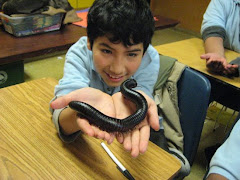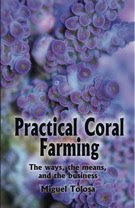
I really like the green movement, don't get me wrong it's progressive and necessary. But, a lot of people are suffering from
"Green Wash" - which is basically like hearing your favorite song on the radio 15 times a day and you hear it so much you can barely listen to it anymore (Hootie and the Blowfish?), but for environmentalists. A recent self-interview by Mike Rowe, the host of the
Discovery Channel series "Dirty Jobs" brought a new color into the mix. Brown.
On his show, Mike, profiles dirty jobs in America including: artificially inseminating cows, sewer maintenance, and - my favorite - breeding bugs. The jobs being profiled are in essence "green" themed without having a blatant environmental agenda. Men and women who are doing down and dirty work that benefits the planet we live on. In his
interview with himself, Mike points out that he believes brown should be the new green. Underneath all the green grass and trees, blue oceans and yellow sky.. there is brown.
I have never heard anyone in the green movement really pay attention to the dirt. The dirt that grows all our green is the most important source of them all. I then got to thinking about how much kids pay attention to dirt. Somehow almost every child I've ever been with outside will find the biggest pile of dirt, sit in it, and play. This wears off as image and the opposite sex become more interesting than what can be found beneath their toes. However, there is a great way to make the substance we all take for granted a star again.
A experiment that can be modified and performed for all age levels is the
Berlese Funnel. Insects that live in the soil prefer dark, moist, cool areas. By placing a lamp above a collection of dirt inside a funnel, avoidance tactics act to push all organisms into a small bit of water in the bottom of a container. The Funnel with a light above and just a small hole below, forces everything to migrate towards cooler dirt, thus into water and onto observation. Once the organisms are in the water students can use magnifying glasses (
for younger students) and microscopes (
for older students) to see what is in the dirt. Several different types of arthropods, nemotodes, arachnids and more can be discovered upon close inspection of their body parts. Students can learn on any level that dirt is ALIVE and very important to all the green that is around them. I think a great way to do the experiment or lab would be to collect soil specimens from various places with different soil. Around a body of water, leaf litter with dirt, under a tree.. any place you or your students can get a couple hands dirty.

Finally, another wonderful book that is sure to get kids excited about dirt is this one, aptly named "
I Love Dirt!: 52 Activities to Help You and Your Kids Discover the Wonders of Nature" by Jennifer Ward, illustrator Susie
Ghahremani and forward by Richard Louv. The book helps young children get in touch with nature through simple, easy to remember projects that can be taken along in memory or in the easy to travel with book, anytime you find yourselves in the great wide open.
So go ahead. Get your hands dirty. Then tell us what you found!



















